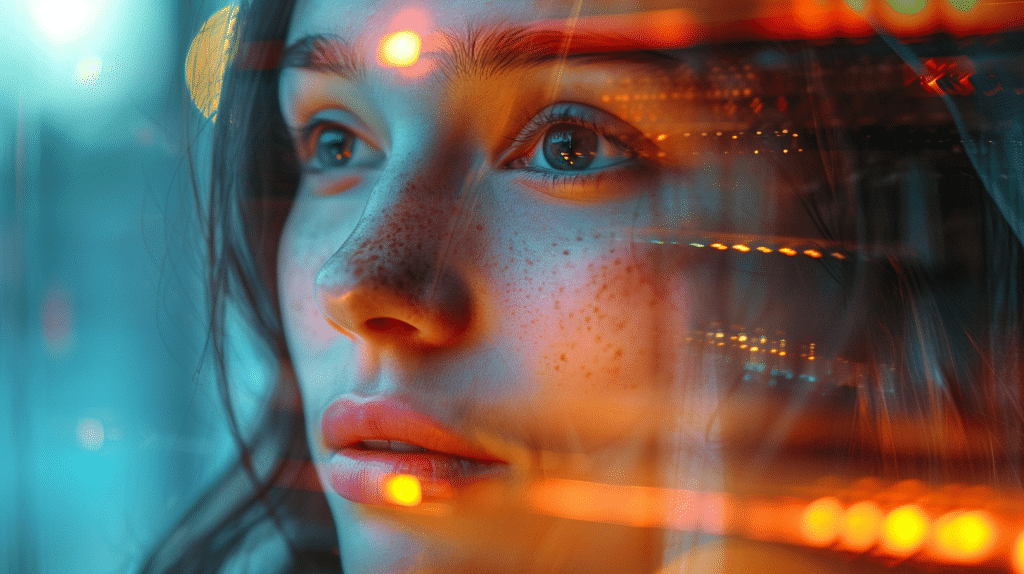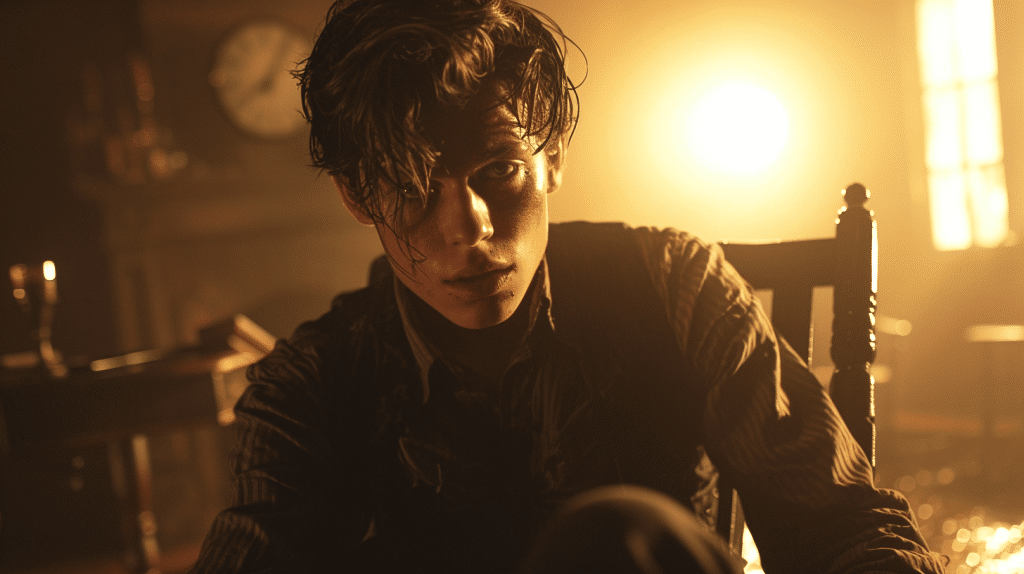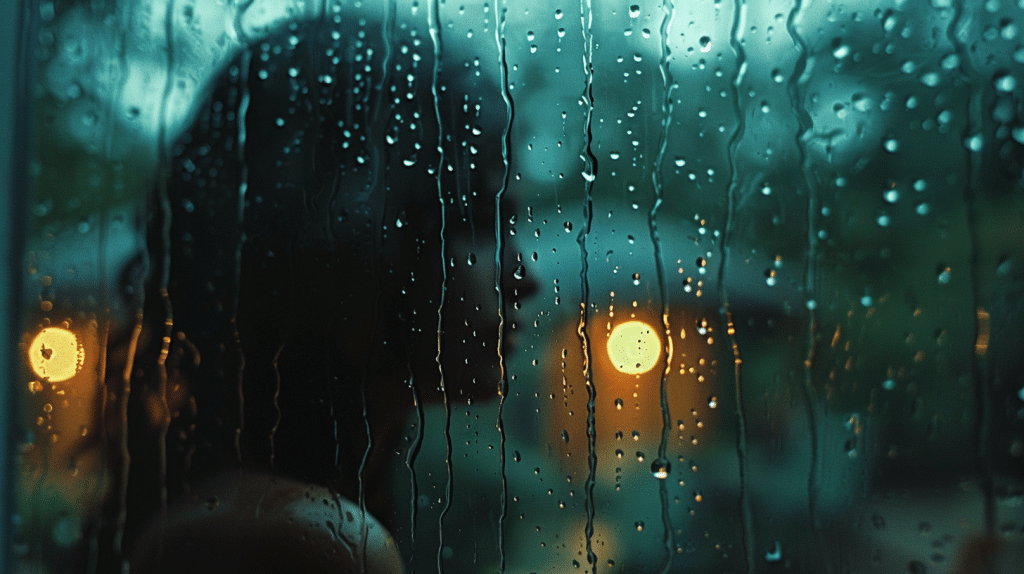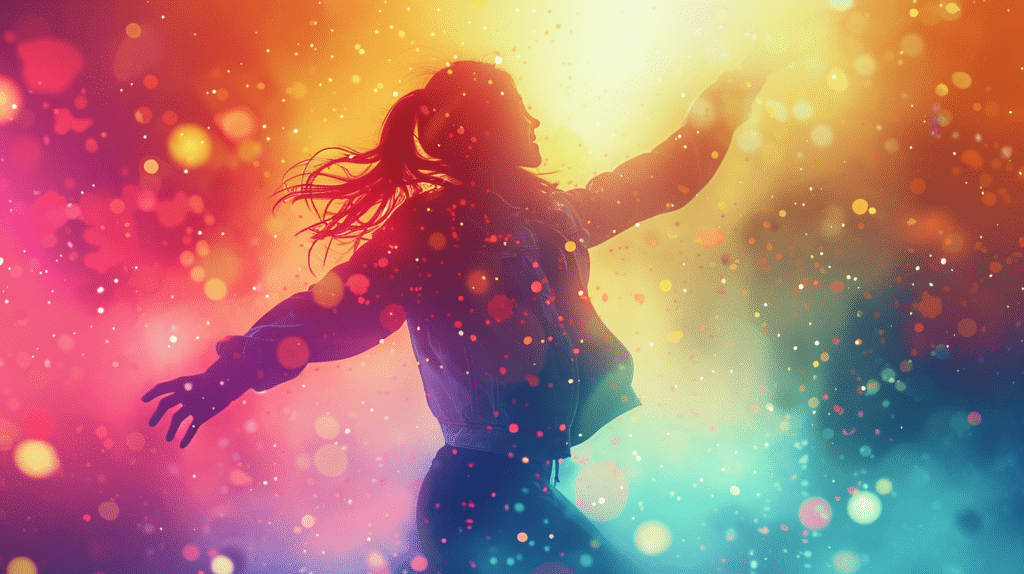Rhythmic Editing: Using Pacing and Timing to Influence Viewer Emotions

You might not know that even the slightest change in the timing of a cut can drastically alter the emotional impact of a scene.
As you explore rhythmic editing, you’ll discover how pacing and timing aren’t just technical choices—they’re essential elements that shape the viewer’s emotional experience.
By mastering these techniques, you can manipulate suspense, tension, and empathy in ways that captivate audiences.
So, if you’re looking to understand how the magic happens behind the scenes, this journey into the art of rhythmic editing will provide you with invaluable insights.
Table of Contents
Understanding Rhythmic Editing
Understanding the concept of rhythmic editing is essential for any filmmaker aiming to evoke specific emotions through precise control of pacing and timing.
Rhythmic editing, rooted deeply in editing history, involves creating a visual tempo that guides the viewer’s emotional experience. You need to grasp how the arrangement of shots, their duration, and connections between them can manipulate the audience’s rhythm of perception.
Historically, filmmakers like Sergei Eisenstein and Dziga Vertov pioneered rhythmic editing by experimenting with montage techniques. Their work emphasized how cutting shots in sync with a specific tempo could evoke powerful emotional responses. By studying these techniques, you’ll understand how to create a flow that resonates with your narrative’s emotional beats.
Visual tempo is key to rhythmic editing. It’s not just about how long each shot lasts but how they collectively form a pattern. For instance, quick cuts can heighten tension, while longer takes may evoke a sense of calm or introspection.
To master rhythmic editing, you must meticulously plan your shot sequence, ensuring each cut aligns with the intended emotional arc. This precise control over visual tempo enables you to craft a compelling and emotionally engaging story.
The Importance of Pacing
You can use pacing to enhance the narrative flow and keep viewers engaged.
By adjusting the timing of cuts, you’ll build emotional tension and deepen the audience’s connection to the story.
Mastering this technique transforms scenes from simple sequences into compelling visual experiences.
Enhancing Narrative Flow
Effective pacing acts as the heartbeat of your narrative, ensuring each scene flows smoothly and sustains viewer engagement.
By meticulously adjusting the rhythm of your edits, you can enhance how character arcs unfold and how visual motifs are perceived. When a character’s journey is paced just right, it allows the audience to connect deeply with their transformations and struggles, making every moment resonate emotionally.
To achieve this, consider the tempo of each scene.
Quick cuts and fast-paced sequences can mimic the adrenaline of an action scene, while slower, lingering shots can offer a more introspective look into a character’s psyche. This variation in pacing not only maintains interest but also creates a dynamic rhythm that mirrors the narrative’s emotional beats.
Visual motifs, such as recurring symbols or color schemes, also benefit from careful pacing.
Introducing these elements at strategic points can build a cohesive visual language that reinforces key themes and emotions. For example, a recurring color might signify a character’s evolving state of mind, subtly guiding the viewer’s emotional response.
Building Emotional Tension
Mastering the art of pacing is essential for building emotional tension that grips your audience from start to finish.
When you control the tempo of your scenes, you can effectively guide viewers through an emotional build up that peaks at just the right moment. To achieve this, you need to be deliberate with your cuts, conversions, and the duration of each shot.
One powerful technique for suspense creation is to gradually increase the frequency of your cuts as the scene progresses.
Start with longer, lingering shots to establish a sense of normalcy and slowly shorten them as you approach the climax. This method amps up the tension, making viewers feel on edge.
In addition, the rhythm of your editing should align with the narrative’s emotional beats.
For instance, during a high-stakes confrontation, quick cuts can simulate the characters’ heightened stress and urgency. Conversely, slower pacing during moments of introspection allows the audience to fully absorb the characters’ emotional states.
Timing in Film Editing
Timing in film editing crafts the emotional rhythm that guides viewers’ reactions and engagement.
By carefully manipulating cut timing and scene changes, you can deeply influence how an audience perceives and feels about a particular moment. Cut timing is vital; a well-timed cut can heighten suspense, while a poorly timed one can disrupt the narrative flow.
For instance, cutting away from a character’s reaction too quickly can undercut the emotional weight of a scene. Conversely, lingering too long can make the pacing drag, causing viewers to lose interest.
Scene adjustments also play a pivotal role in maintaining the film’s emotional cadence.
Smooth adjustments can create a seamless narrative flow, making the story feel cohesive. Quick, abrupt adjustments, on the other hand, can add a jarring effect that might be perfect for scenes of chaos or surprise.
Mastering these techniques requires understanding the emotional arc of your story and how each cut and adjustment contributes to that arc.
By paying close attention to timing, you can keep viewers emotionally invested, ensuring that each scene resonates as intended. The rhythm you create through editing becomes a silent but powerful storyteller in its own right.
Building Emotional Tension

Crafting emotional tension in film editing involves strategically manipulating the rhythm and pacing to elicit a visceral response from the audience. To build suspense effectively, you need to carefully control the timing of cuts, length of shots, and the overall flow of the sequence.
Start by elongating shots to create a sense of anticipation. The longer a shot lingers, the more the audience’s anxiety builds, fostering an emotional buildup that keeps them on the edge of their seats.
Consider using slower pacing during critical moments to draw viewers into the narrative.
This deliberate pacing contrasts sharply with faster sequences, making the tension palpable. Pay attention to the timing of character reactions and environmental cues; these elements can amplify the suspense if you sync them perfectly with the unfolding action.
Visual storytelling plays a significant role here.
Utilize close-ups and insert shots to highlight key details that contribute to the emotional buildup. For instance, a close-up of a character’s anxious expression or a ticking clock can enhance the sense of impending doom.
Your goal is to make the audience feel the emotional weight of every frame, driving them deeper into the story’s tension.
Techniques for Rapid Cuts
Rapid edits can inject energy and urgency into a scene, compelling viewers to feel the intensity and chaos unfolding on screen. To master this technique, you need to understand cut shifts and how they can manipulate the audience’s emotional response.
Quick, sharp alterations can disorient viewers, placing them right in the middle of the action.
When crafting montage sequences, rapid cuts become essential.
By juxtaposing multiple images or scenes in a brief span, you can convey a vast amount of information quickly, allowing the viewer’s mind to fill in the gaps. This technique is particularly effective in action-packed scenes or sequences meant to show a character’s frantic state of mind.
To execute rapid cuts effectively, pay attention to the rhythm of your shifts.
Consider the beat and tempo of the accompanying music, if any, as it can enhance the sense of urgency. The key is to maintain coherence despite the speed; each alteration should logically lead to the next, ensuring the viewer isn’t lost in the chaos.
The Art of Lingering Shots

When you master lingering shots, you can build emotional tension that keeps viewers on the edge of their seats.
By holding a frame longer, you enhance narrative depth and allow the story to breathe.
This technique captures authentic moments that resonate and leave a lasting impact on your audience.
Building Emotional Tension
By holding a shot just a few seconds longer than expected, you can create a palpable sense of unease that draws viewers deeper into the narrative.
This technique taps into the viewer’s subconscious, forcing them to contemplate the character’s motivation and the underlying plot structure. When you linger on a scene, it gives the audience time to absorb the emotional weight and complexity of the moment.
Lingering shots are especially effective in heightening emotional tension. Here’s how you can employ this method to its fullest potential:
- Character Reactions: Focus on a character’s subtle facial expressions or body language, revealing internal conflict or hidden emotions.
- Environment and Atmosphere: Extend shots of specific settings to build a mood that mirrors the narrative’s tension, like a deserted alleyway at night.
- Silence and Sound: Use the absence or presence of sound to amplify the tension. The natural soundscape of a ticking clock can emphasize the passage of time.
- Pacing Variation: Mix lingering shots with rapid cuts to create a rhythm that keeps the audience on edge, contrasting moments of calm with sudden bursts of action.
Enhancing Narrative Depth
Lingering shots, by immersing the viewer in a moment longer than usual, enable you to investigate further the emotional and narrative layers of your story.
This technique allows you to explore deeply into character development, offering viewers a chance to connect with the subtleties of a character’s inner world. When you hold a shot for an extended period, you invite the audience to observe minute details—expressions, body language, and the environment—all of which contribute to a richer understanding of the character.
Incorporating visual motifs within lingering shots can enhance the narrative depth even more.
A recurring symbol or setting, when given extra screen time, can evoke specific emotions and underline thematic elements. For example, a lingering shot of a character repeatedly visiting a particular location can underscore their emotional state or a pivotal change in their journey.
Capturing Authentic Moments
To truly capture authentic moments, you must master the art of lingering shots, which allows the audience to fully experience the raw emotions and subtleties of the scene. By letting the camera linger, you create space for improvisational authenticity and unscripted interactions, making the narrative feel more genuine and emotionally resonant.
Lingering shots provide a visual and emotional pause, letting viewers absorb the intricacies of a performance. These pauses are essential to convey the underlying tension, joy, or sorrow that scripted moments sometimes fail to capture.
Here’s how you can effectively employ lingering shots:
- Focus on Details: Highlight subtle gestures or expressions that reveal deeper emotional layers.
- Timing: Hold the shot just long enough to create a meaningful impact without overstaying its welcome.
- Naturalistic Lighting: Use lighting that complements the authenticity of the moment, avoiding overly dramatic setups.
- Sound Design: Integrate ambient sounds that enhance the realism, making the scene more immersive.
Mastering these elements ensures that your lingering shots contribute to the narrative’s emotional depth. Remember, it’s about finding the right balance between pacing and timing to let the authentic moments breathe and resonate with your audience.
Balancing Rhythm and Flow
Achieving a seamless balance between rhythm and flow in editing is essential for maintaining the viewer’s emotional engagement and narrative immersion. When you’re working on scene handovers, make sure they’re smooth and purposeful.
Abrupt or poorly timed handovers can disrupt the viewer’s connection to the story. Focus on creating a natural flow between scenes, enhancing the emotional journey.
Shot continuity is another critical factor. You need to be meticulous about how each shot connects to the next.
Consistent visual and thematic elements help maintain the rhythm, making the narrative feel cohesive. Pay attention to the pacing of individual shots—too quick, and you risk overwhelming the viewer; too slow, and you might lose their interest.
To master rhythmic editing, consider the emotional beats of the story.
Match the editing pace to the narrative’s emotional highs and lows. Quick cuts can amplify tension or excitement, while longer, lingering shots can evoke introspection or sadness.
Using Music and Sound

You can harness music and sound to set the emotional tone of your scenes, making your audience feel exactly what you intend.
By synchronizing visuals harmoniously with your audio elements, you create a seamless experience that enhances storytelling.
Adjusting volume and intensity dynamics allows you to control the viewer’s emotional peaks and valleys, ensuring an engaging journey.
Emotional Tone Setting
Soundscapes and music play a pivotal role in setting the emotional tone of a scene, guiding viewers’ feelings and responses with precision. When you pair the right sound design with effective color grading, you create a powerful combination that enhances the emotional impact of your narrative.
By meticulously choosing and timing music and sound effects, you can evoke specific emotions and immerse your audience deeper into the story.
Consider these elements to elevate your emotional tone setting:
- Ambiance: Use ambient sounds to create a realistic environment that complements the visual mood. For instance, a soft rain can evoke melancholy, while distant city noises can suggest loneliness.
- Musical Score: Select a musical score that aligns with the scene’s emotional arc. A swelling orchestral piece can heighten drama, while a minimalist piano can underscore intimate moments.
- Sound Effects: Implement sound effects to intensify emotions. The creak of a door can build suspense, and a sudden loud noise can jolt the audience.
- Silence: Sometimes, the absence of sound can be more impactful than any score or effect, creating tension and drawing viewers’ focus to the visuals.
Integrating these audio elements thoughtfully guarantees your scenes resonate emotionally, making your visual storytelling compelling and unforgettable.
Synchronizing Visuals Harmoniously
Building on the emotional tone set by your soundscapes and music, synchronizing visuals harmoniously with these audio elements amplifies the viewer’s emotional connection to the narrative.
To achieve this, start by aligning your visual cuts and progressions with the rhythm of your soundtrack. This creates a seamless flow that heightens the impact of both the visuals and the audio.
Color grading plays an essential role in this synchronization.
By matching the color palette to the mood of the music, you can create a cohesive aesthetic that enhances the story’s emotional depth. For instance, warm hues can amplify feelings of nostalgia or romance, while cooler tones can evoke a sense of calm or melancholy.
In addition, pay attention to visual symmetry.
Balanced compositions that mirror the structure of the music can create a satisfying harmony for the viewer. Use symmetry in your shots to reflect the musical beats, making the visuals feel like a natural extension of the audio.
Volume and Intensity Dynamics
Frequently, manipulating volume and intensity in your music and sound effects can dramatically alter the viewer’s emotional response, making scenes more immersive and impactful. By carefully modulating these elements, you can create dynamic soundscapes that enhance the visual narrative.
To make the most of volume and intensity dynamics, consider these points:
- Soundscapes modulation: Varying the volume and intensity of background sounds can subtly influence the mood. For instance, a gradual increase in ambient noise can build tension, while a sudden drop can evoke a sense of isolation or shock.
- Audio crescendos: Building up the volume of music or sound effects to a peak can heighten emotional moments. This technique is particularly effective in climactic scenes, adding a powerful auditory punch to match the visual crescendo.
- Contrast and silence: Don’t underestimate the power of silence. Alternating between loud and quiet segments can create a rhythm that keeps viewers on edge, emphasizing key moments and moments of impact.
- Synchronized impact: Make certain that changes in volume and intensity align with the visual pacing. A well-timed audio cue can reinforce on-screen actions, making them feel more immediate and visceral.
Case Studies in Editing
In examining case studies, we’ll uncover how expert editors utilize pacing and timing to evoke powerful emotional responses from viewers. Through editor interviews and historical examples, you can see how the art of rhythmic editing shapes the narrative and emotional tone of a film or video.
Alfred Hitchcock’s ‘Psycho’ (1960)
Take, for instance, the classic film ‘Psycho,’ edited by George Tomasini. His use of rapid cuts during the infamous shower scene creates a sense of panic and terror. Interviews with Tomasini reveal his meticulous approach to timing each cut, ensuring that the viewer’s heartbeat aligns with the escalating tension. This technique is still studied and emulated in modern horror films.
Francis Ford Coppola’s “The Godfather” (1972)
Another compelling example is Walter Murch’s work on ‘The Godfather.’ Murch’s deliberate pacing in the baptism scene, where he intercuts the serene ceremony with violent mob executions, heightens the emotional impact. His interviews often highlight the importance of timing to juxtapose peace and chaos, making the audience feel the duality of Michael Corleone’s transformation.
These case studies demonstrate that mastery of pacing and timing isn’t just about technical skill; it’s about understanding human emotion and crafting a visual rhythm that resonates deeply with the audience.
Tools and Software
To master the art of rhythmic editing, you’ll need to familiarize yourself with powerful tools and software designed to fine-tune pacing and timing. Premiere Pro and DaVinci Resolve are two of the most versatile options, offering a plethora of features to help you craft emotionally resonant visual stories.
Premiere Pro is known for its intuitive interface and robust toolset, perfect for intricate timing adjustments. You can manipulate clip speed, use markers for precise cuts, and leverage the Lumetri Color panel to enhance the emotional tone.
DaVinci Resolve, on the other hand, excels in color grading and offers advanced audio editing capabilities, ensuring your rhythm is both visually and sonically compelling.
Here are essential features to explore:
- Timeline Precision: Both Premiere Pro and DaVinci Resolve offer frame-by-frame editing, essential for nailing the perfect cut.
- Audio Syncing: Effective pacing isn’t just about visuals; sync your audio seamlessly to heighten emotional impact.
- Transitions and Effects: Use crossfades, jump cuts, and motion effects to guide viewers’ emotions.
- Color Grading: Adjust hues and contrasts to align the visual tone with the intended emotional response.
Frequently Asked Questions
How Can Rhythmic Editing Enhance the Storytelling in Documentaries?
Rhythmic editing can enhance storytelling in documentaries by carefully managing interview sequencing and narrative flow. By strategically pacing scenes, you can create a visual storytelling rhythm that maintains viewer engagement and heightens emotional impact.
Quick cuts during tense moments and longer takes during reflective scenes help emphasize key points, guiding the audience’s emotions and ensuring a seamless, compelling narrative flow throughout the documentary.
What Role Does Color Grading Play in Rhythmic Editing?
Imagine you’re painting with light and shadow. Color grading in rhythmic editing isn’t just a technical tweak; it’s a maestro conducting an emotional symphony.
By leveraging color psychology, you can amplify beats, synchronize visual storytelling, and deepen emotional resonance.
The right hues can evoke joy, tension, or melancholy, guiding the audience’s feelings in harmony with the narrative’s rhythm.
Your film’s emotional impact will be profound.
How Do Different Genres Affect Rhythmic Editing Techniques?
Different genres greatly influence rhythmic editing techniques. In action sequences, you’ll use rapid cuts and dynamic pacing to heighten tension and excitement, ensuring a high emotional impact.
Conversely, romantic scenes benefit from longer takes and smoother flow to emphasize intimacy and connection.
Your expertise in visual storytelling lets you tailor the editing rhythm to evoke the desired emotions, making each genre’s unique narrative more compelling and immersive.
Can Rhythmic Editing Be Effectively Applied in Animated Films?
Yes, you can effectively apply rhythmic editing in animated films. By synchronizing sound with character movements, you create a seamless visual storytelling experience that maximizes emotional impact.
Precise timing between action and audio enhances the viewer’s connection to the story. Whether it’s a fast-paced chase or a heartfelt moment, rhythmic editing guarantees that each scene resonates emotionally and visually with the audience.
What Are Common Mistakes to Avoid in Rhythmic Editing?
When focusing on rhythmic editing, avoid inconsistent pacing as it disrupts the emotional impact. Guarantee smooth transformations to maintain the viewer’s immersion.
Sudden shifts can jolt the audience, breaking their connection with the story. Consistency in pacing lets you build and release tension effectively, enhancing visual storytelling.
Wrapping Up
In rhythmic editing, every cut and shift is a deliberate choice to steer audience emotions.
Did you know that a well-timed edit can increase viewer engagement by up to 20%?
Mastering this technique isn’t just a technical skill; it’s an art form that enhances visual storytelling and emotional impact.
By understanding and applying rhythmic editing, you’ll craft films that resonate deeply and keep your audience on the edge of their seats.
Share:
Search our blog:
Follow us on:
